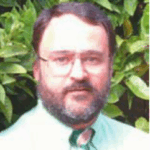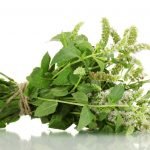Combating Stress with Naturopathic Philosophy
Arlan Cage, ND, LAc
Here in the greater Los Angeles region, I see a wide variety of patients, from blue-collar dock workers to high-priced attorneys. They all share one thing in common: I’ve yet to see a patient with Para-Sympathetic Dominance. Maybe I haven’t been in practice long enough, but so far, my practice is overwhelmed with patients displaying the common signs and symptoms of Sympathetic Dominance, otherwise known as long-term stress.
They virtually all report the same problem: too much to do and not enough time in which to do it, and no time to exercise, eat healthy, meditate or have fun. Sometimes they report that stress is the major problem in their lives. More often, however, they present with a variety of “unrelated” symptoms, and don’t realize that stress can be causing, or at least exacerbating, all of them.
Needless to say, when I try to tell these patients they don’t have enough time not to exercise, eat healthy, meditate or have fun, it often doesn’t go over too well. Like most problems in practice, I find that falling back on naturopathic philosophy seems to work best when trying to help these patients.
The Doctor as Teacher
Some patients already know a great deal about the autonomic nervous system; for others, learning they have one is new information. I spend a fair amount of time teaching them that the Sympathetic Nervous System, which controls their “fight or flight” response, is hard-wired programming they don’t consciously control. The two analogies I use are the Attack of the Sabre-Toothed Tiger, for short-term stress responses; and Famine, for long-term stress. This is especially important in most of the GI cases I see, since one of the physiological responses during sympathetic discharge is to inhibit GI motility, blood flow and secretion. I’ve even had patients blurt, “maybe I shouldn’t eat when I’m still stressed!” after hearing how this system works. Knowledge is power, and understanding the problem is usually the first step for patients to make realistic life changes.
Treat the Root Cause
It is important to remember that our ANS, even the Sympathetic response, represents normal physiology intended to protect us from real, physical problems. What is abnormal is the way we have learned to equate day-to-day activities with life-threatening events. While being stuck in LA traffic, only to arrive at the dry cleaners and find they lost the suit you wanted to wear to the banquet tonight is certainly annoying; it really isn’t going to kill you the way the sabre-toothed tiger would. Unfortunately, our bodies are still wired very simply for that primitive world, and don’t know the difference between the real tiger and the ones we imagine. We have to teach it the difference. Most patients are surprised to learn they can change their nervous system programming. Meditation, yoga and particularly the martial arts can be valuable tools in this process.
Treat the Whole Person
Telling patients they need some extra vitamin C, B-complex and adrenal support with herbs or glandulars may be a nice first step, but alone, their stress-related health problems will seldom disappear permanently. The root cause isn’t stress, but the way they respond to stress. To understand that requires an understanding of patients’ mental and emotional upbringing, social situation, beliefs, how they interact with the world around them and so on. Sometimes patients will respond to simply being made aware of these issues. Other times, they may need referrals to a counselor; for example, if the issues are deep-seated beliefs instilled during a highly dysfunctional childhood. Constitutional homeopathy seems to be an excellent tool for helping patients bring their lives back into balance.
Prevention
Helping patients understand the root causes of their health conditions is a big first step. Using that knowledge to create a more healthy lifestyle that includes time for exercise, healthy eating, meditation and fun will be needed both for recovery and healing, as well as for long-term prevention. The most frequent response I hear given by patients is they have no time to eat healthy, especially at lunch. I’ve found two strategies that often help my high-stress patients make the transition to healthier eating.
First, they should create one healthy meal at a time. I usually suggest breakfast, since if they load up on high-quality fuel in the morning, especially if it emphasizes healthy proteins and fats, it will help stabilize their blood sugars throughout the morning and they will be less tempted to eat unhealthy snacks throughout the day.
Second, they should have a cooking party on the weekend – find friends or family members who are in a similar situation and pool their efforts to prepare a week’s supply of high-quality, nutritious meals, cut them into individual portions and freeze them. Then, when time is short, healthy fast food is readily available.
The Healing Power of Nature
I’ve come to believe that stress and the constellation of symptoms it produces is really a new, modern miasm in our culture. Traditional homeopathy teaches that miasms are primarily due to infectious illnesses, but given our holistic structure as energetic human beings, and that infectious organisms can’t colonize healthy tissues but only invade hosts with abnormal internal environments, we need to rethink this notion. I see no reason why energetic miasms are not possible. To understand the larger social implications of stress, remember where it is based: the fight-or-flight response … in other words, fear.
In oriental medicine, fear is the emotion associated with the kidney. The Oriental Kidney includes all the functions that Western medicine attribute to the adrenal gland. Old naturopathic authors such as Lust and Lindlahr often spoke of “nerve energy.” In my analysis, this nerve energy is clearly qi, or the vital force. Since we all have auras and energy fields that interact with each other and the planet, we can start to see how the notion of an energetic miasm may come to originate. The best defense against a fear-based miasm may be a stronger sense of community – extending the idea of holism from single individuals to include entire cities and cultures.
First, Do No Harm
Start the patient interview gently. Some people won’t be able to handle an entire lifestyle change the first day. You don’t want to scare off a patient by being too zealous. I’ve found it beneficial to really focus on the medical end of the situation first. Orthostatic blood pressure testing is a good in-office screening tool; diurnal salivary cortisol tests and thyroid or sex hormone panels will help some patients realize stress really is affecting their health. As they gain confidence in you, and as the symptomatic support you recommend begins to help, they often will become more open to suggestions in lifestyle changes that can truly bring about a permanent change in the way they respond to stressful events.
 Arlan Cage, ND, LAc, earned his doctorate in naturopathic medicine from SCNM in Tempe and a master of science in oriental medicine from Samra University in Los Angeles. He lives in Redondo Beach, Calif., and practices in neighboring Torrance, where he specializes in natural approaches to internal medicine, with an emphasis on endocrinology, gastroenterology and oncology. He can be contacted through his practice, South Bay Total Health.
Arlan Cage, ND, LAc, earned his doctorate in naturopathic medicine from SCNM in Tempe and a master of science in oriental medicine from Samra University in Los Angeles. He lives in Redondo Beach, Calif., and practices in neighboring Torrance, where he specializes in natural approaches to internal medicine, with an emphasis on endocrinology, gastroenterology and oncology. He can be contacted through his practice, South Bay Total Health.








